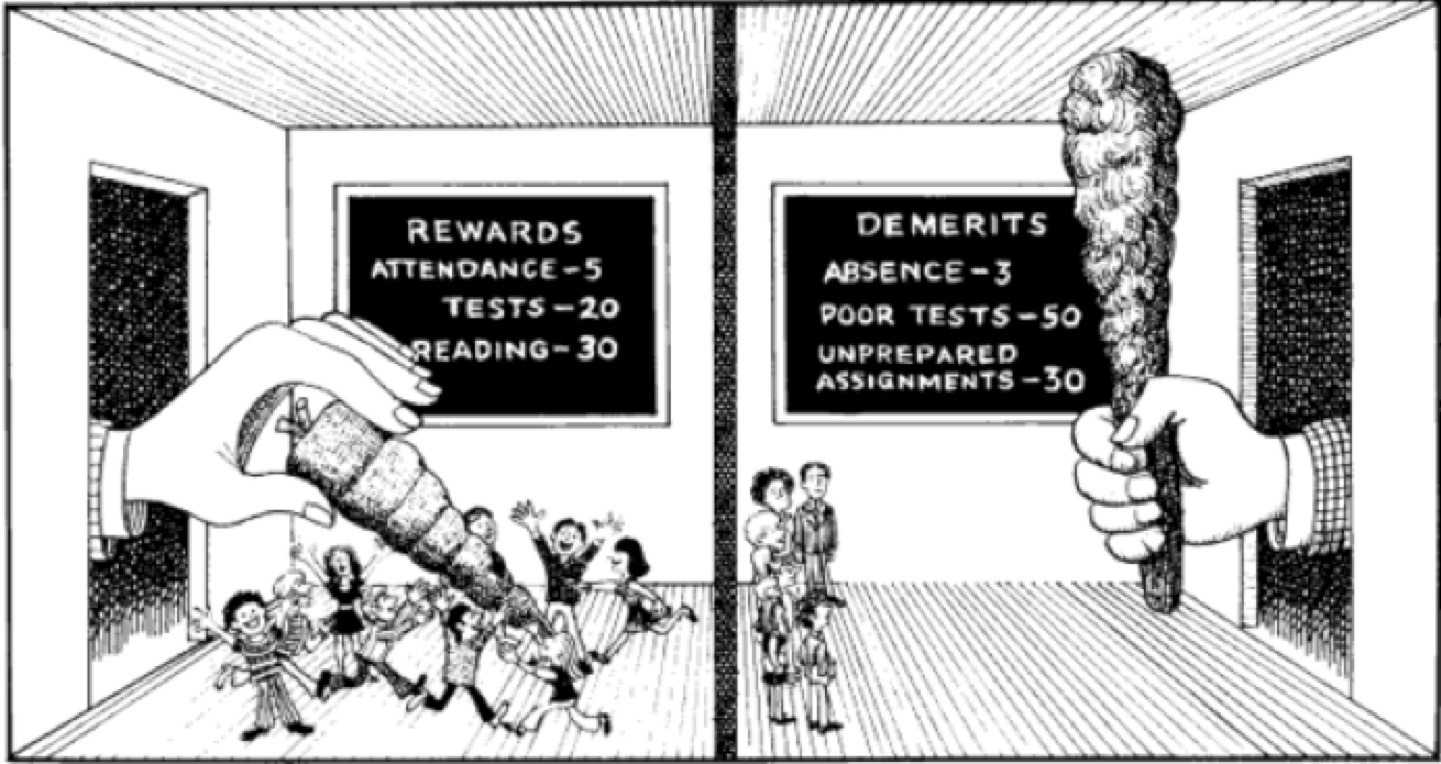Positive Reinforcement
Definition
Rewards (reinforcement) are responsible for increasing the rate of responding or making responses more likely to occur.
- Positive reinforcers are favorable events or outcomes that are presented after the behavior. Thus a response or behavior is strengthened by the addition of something, such as teacher praise, free time, privileges, stickers, and high grades.
- Negative reinforcers involve the removal of an unfavorable events or outcomes after the display of a behavior. Thus a response is also strengthened by the removal of something considered unpleasant.
On the contrary, Punishment decreases the future likelihood of responding to a stimulus. There are two kinds of punishment:
- Positive punishment referred to the presentation of an unfavorable event or outcome in order to weaken the response it follows.
- Negative punishment occurs when a favorable event or outcome is removed after a behavior occurs.

Figure 1. Source: http://www.bilgekalemi.com/wp-content/uploads/2013/03/davran%C4%B1%C5%9F%C3%A7%C4%B1l%C4%B1k.jpg
Basic Assumptions and Principles
Reward immediately follows the target behavior.
Reward fits the target behavior and is meaningful to the learner. Only consequences that the learner himself or herself perceives to be reinforcing will motivate that learner
Punishment is not an effective means of altering behavior because it does not teach students correct behaviors but rather informs them of what not to do.
Punishment is used infrequently but may be needed when behavior becomes so disruptive that it cannot be ignored (e.g., fighting).
It is far better to use intrinsic (natural) rather than extrinsic (artificial) rewards and punishment. Natural reinforcers are ordinary results of a behavior and occur naturally in the environment and logically relate to the task of performing to obtain it, such as: receiving a good grade after studying, and having more friends as a result of good social skills
Classroom Implication and Teaching Strategies
It is more effective when
- Teachers present the material in small steps,
- Learners actively respond rather than passively listen,
- Teachers give feedback (rewards or punishments) immediately following learners responses
- Teachers allow learners move through the material at their own paces.
Resources
Is Punishment or Reward More Effective?
References
Maag, J. W. (2001). Rewarded by punishment: Reflections on the disuse of positive reinforcement in schools.Exceptional children, 67(2), 173-186.